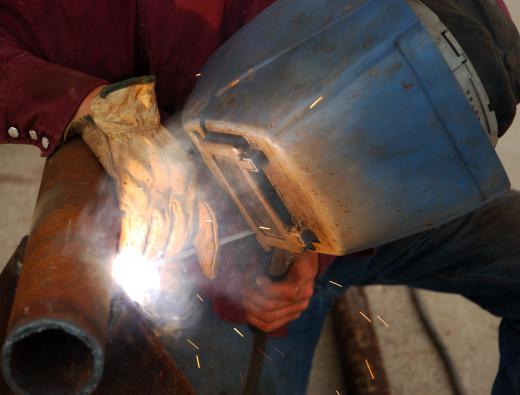Tack welding is a technique where people create short welds at isolated points to hold two or more pieces of metal together during the fabrication process. This method creates a temporary joint to hold the metal in position, not a permanent one, and the welder will need to go back over the project to finish the welding. This process is an important part of metal fabrication with many kinds of items, and it must be performed properly for safety and the integrity of the finished project.
A simple example of tack welding can be seen when a welder wants a perpendicular joint between two pieces of metal, creating a T-shaped object. If the welder simply clamps the metal and starts welding, there is a risk of warping and deforming the joint during the welding process, pulling the metal out of alignment. The finished joint is firmly welded and cannot be adjusted if the welder makes a mistake. Instead, the welder starts with tack welding, creating a few short welding points around the joint to fix it in position before going over it to finish the job.

Welders can temporarily fix metal in place with tack welding while working on projects to make sure the metal is in the right position before creating a final weld. The tack welding is more flexible, allowing for small adjustments to the position of the metal. If there is a mistake, the welder can easily separate the pieces and start over, or swap in a new piece if a piece is not the right one for the job.

These temporary welds are not very strong. While they will hold the metal, they cannot bear stress or strain. Workers need to be aware that pieces only have tack welds in place and should exercise caution around the project. It's important to avoid standing under the metal, pulling on it, or creating hazards by stacking objects on top of it. As workers finish final welds, the project will be stronger and more capable of bearing stress.
In tack welding, welders must be careful about introducing defects to the project. The tack welds need to be clean, and welders should check for signs of metal fatigue or strain like cracks, fissures, discolorations, and so forth. If materials spill during the welding process they need to be carefully removed, as deposits of material like flux can create a hazard by weakening the metal or making it harder to create the final weld.
